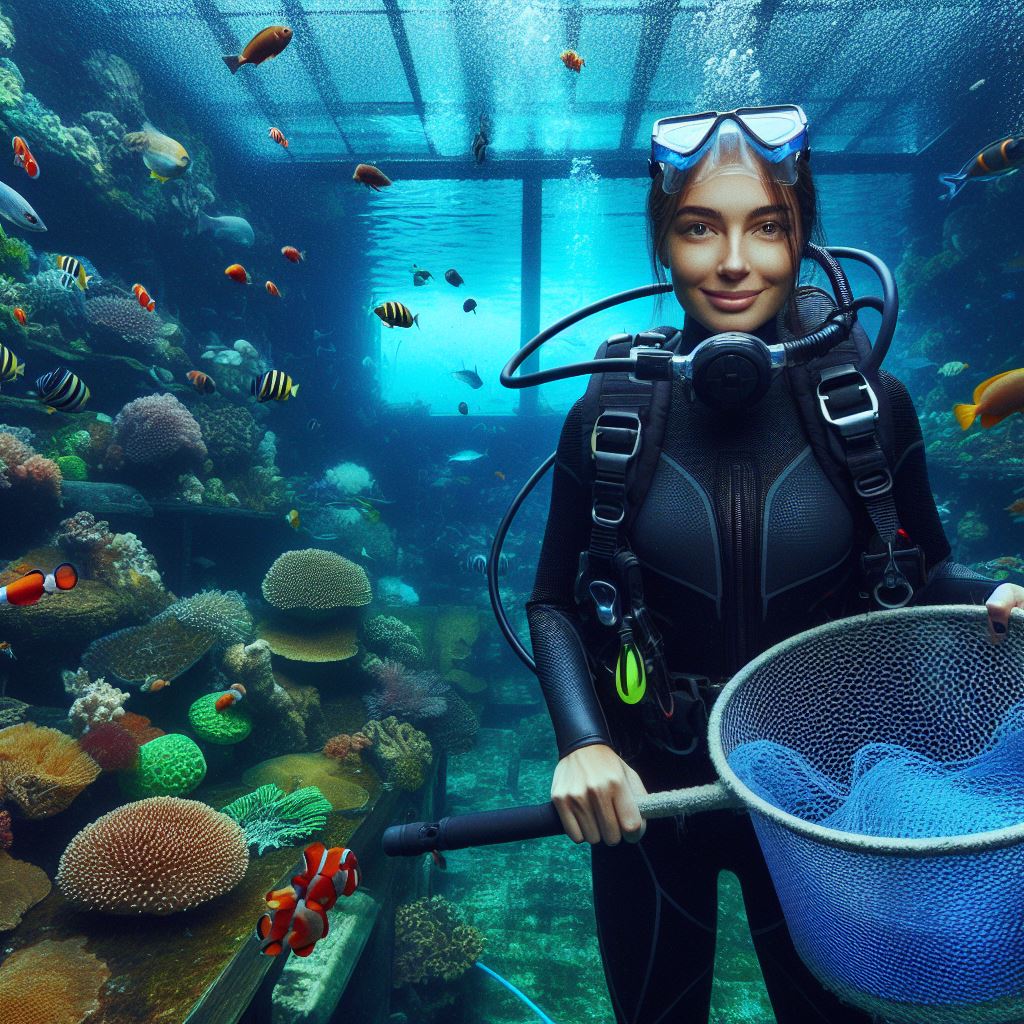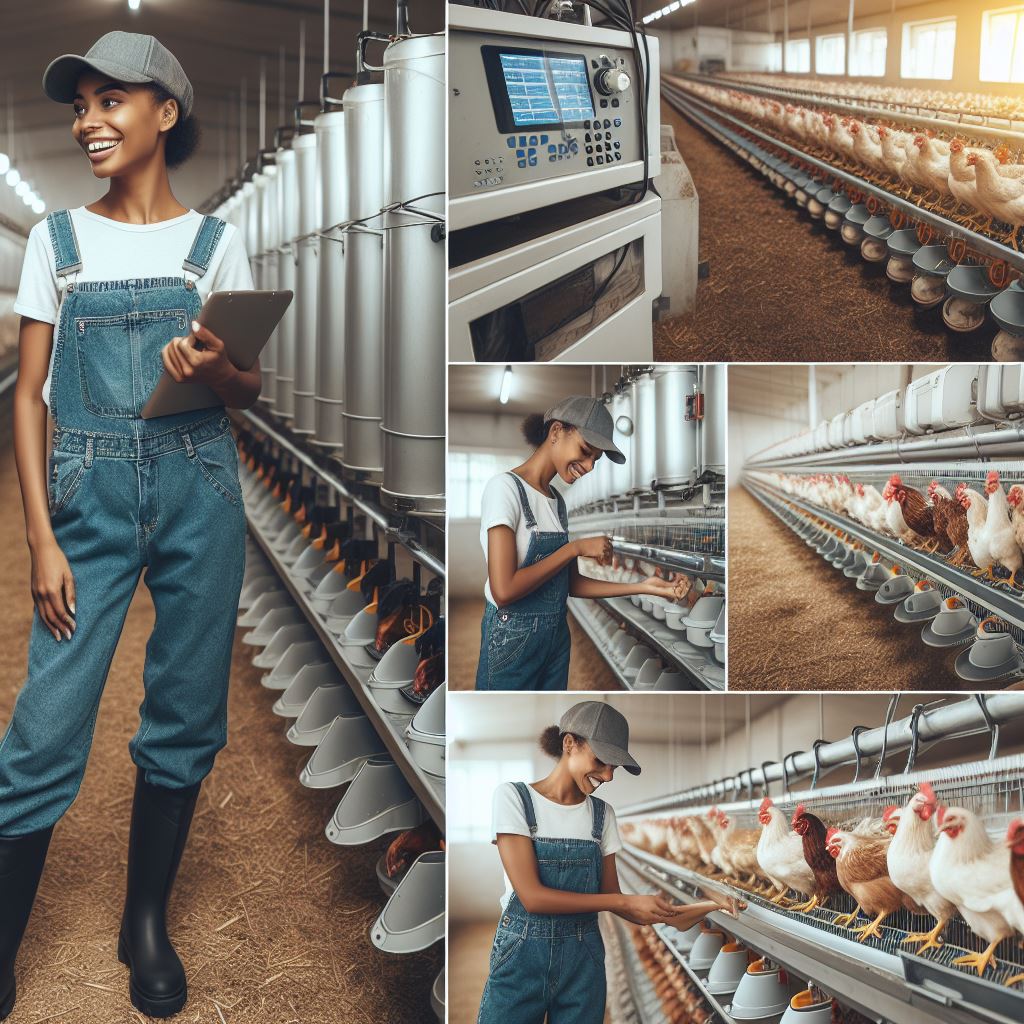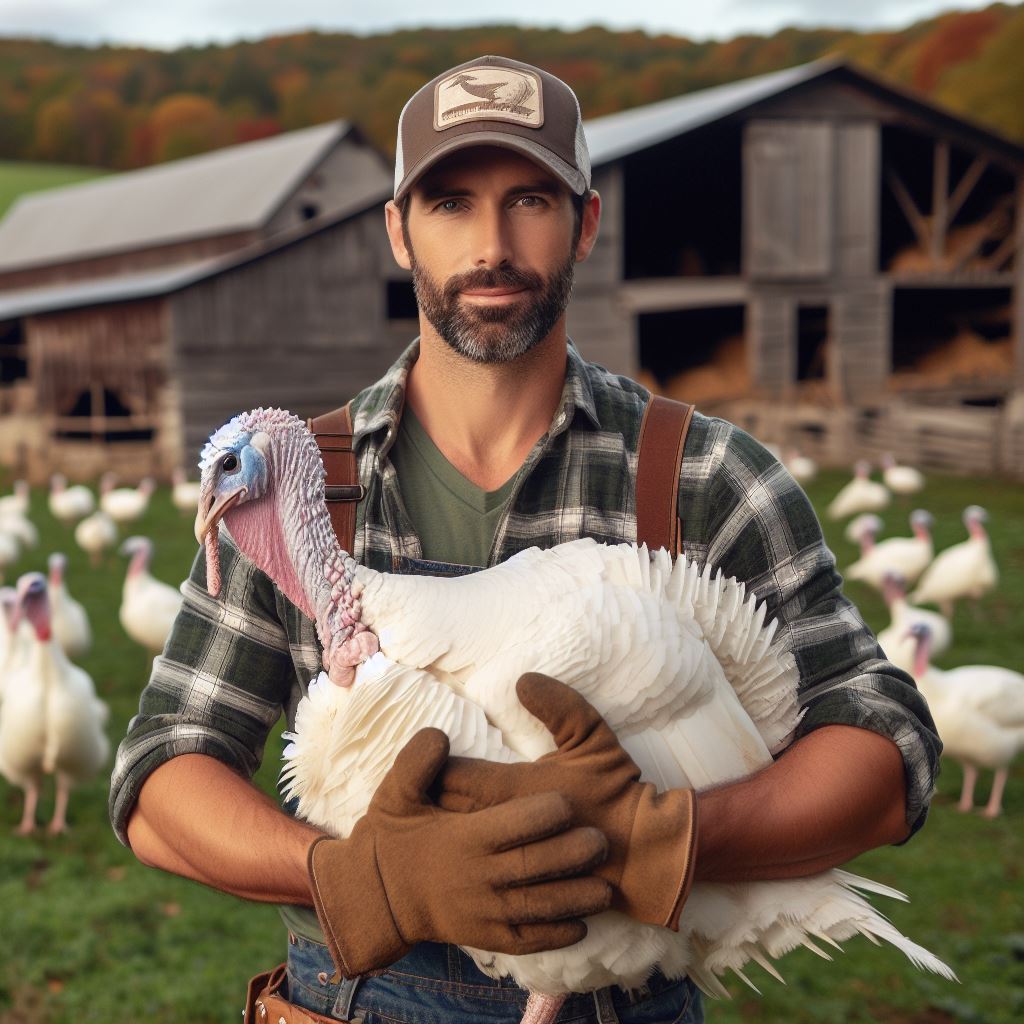Introduction
Aquaculture is the practice of farming aquatic organisms, including fish, crustaceans, mollusks, and aquatic plants.
It plays a crucial role in meeting the global demand for seafood and has become an essential sector of the food industry.
Brief Explanation of Aquaculture and its Importance
Aquaculture involves cultivating fish and other aquatic organisms in controlled environments, such as ponds, tanks, and cages.
It provides a sustainable solution to the overexploitation of wild fish stocks and helps alleviate pressures on natural ecosystems, supporting biodiversity conservation.
Overview of Fish Farming as a Key Component of Aquaculture
Fish farming is a central aspect of aquaculture and focuses on rearing fish species for commercial purposes.
It involves the process of breeding, hatching, and raising fish until they reach marketable sizes.
Fish farms can vary in size and production methods, including land-based, sea-based, or integrated systems.
Fish farming offers numerous advantages, such as maximizing limited water resources, reducing the carbon footprint associated with wild fishing, and providing a steady supply of high-quality fish.
It also allows farmers to control feed and water quality, reducing the risk of contamination and ensuring optimal growth conditions.
Additionally, fish farming supports the local economy by creating employment opportunities and boosting rural communities.
It contributes to global food security, as fish is a valuable source of protein and essential nutrients for a growing population.
To ensure the sustainability of fish farming, responsible practices such as minimizing environmental impacts, monitoring water quality, and adhering to regulatory standards are crucial.
Continuous research and innovation in areas like fish nutrition, disease prevention, and waste management play a vital role in improving productivity and minimizing ecological risks.
In essence, fish farming is a key component of aquaculture, providing a viable solution to the increasing demand for seafood while minimizing the impact on natural ecosystems.
Embracing sustainable practices is essential to ensure the long-term viability of this industry and maintain the delicate balance between human needs and environmental conservation.
Transform Your Agribusiness
Unlock your farm's potential with expert advice tailored to your needs. Get actionable steps that drive real results.
Get StartedChoosing the Right Fish Species
When it comes to fish farming, selecting the right species is crucial for the success of the venture.
Various factors should be considered to ensure that the chosen fish species thrive in the farming environment.
Factors to consider when selecting fish species for farming
Market demand
It is essential to assess the market demand for different fish species.
Understanding consumer preferences will help in determining which species to cultivate for maximum profitability.
Environmental conditions
Fish species have different environmental requirements.
Factors such as water temperature, pH levels, oxygen availability, and salinity must match the species’ preferences for optimal growth.
Disease resistance
Some fish species are more resilient against common diseases and parasites.
Choosing fish breeds with higher disease resistance can minimize the risk of outbreaks and reduce the need for medication.
Popular fish species for aquaculture and their characteristics
Tilapia
Tilapia is one of the most popular fish species for aquaculture due to its fast growth rate and adaptability to various environmental conditions.
It is also known for its mild taste and low-fat content, making it appealing to consumers.
Catfish
Catfish is another common species in aquaculture, known for its fast growth and high tolerance to different water conditions.
It has a firm texture and mild flavor, making it a versatile option for various culinary preparations.
Salmon
The popularity of salmon farming has surged owing to the high market demand and nutritional benefits.
Rich in omega-3 fatty acids and protein, salmon is a healthy consumer choice.
Matching fish species to environmental conditions and market demand
Warm-water species
If the farm environment provides stable warm water conditions, species like tilapia, catfish, and carp are suitable options.
These species thrive in temperatures between 25-30°C.
Cold-water species
In colder climates, species like trout and salmon are better suited for aquaculture.
These fish prefer water temperatures ranging from 10-20°C for optimal growth.
Brackish water species
Some areas have brackish water, which is a mix of freshwater and saltwater.
Species like red drum and striped bass can adapt well to these conditions, offering options for farmers in such areas.
It is essential to note that market demand should go hand in hand with environmental conditions.
Growing fish species that are in high demand locally ensures a ready market for the harvested fish.
By carefully selecting the appropriate fish species and considering both market demand and environmental conditions, fish farmers can increase their chances of success in aquaculture.
In general, selecting the right fish species is critical for the success of aquaculture ventures.
Showcase Your Farming Business
Publish your professional farming services profile on our blog for a one-time fee of $200 and reach a dedicated audience of farmers and agribusiness owners.
Publish Your ProfileFactors such as market demand, environmental conditions, and disease resistance should be considered.
Popular fish species like tilapia, catfish, and salmon have distinct characteristics and are suitable for different farming environments.
Matching fish species to the right environmental conditions and market demand increases the profitability and sustainability of fish farming operations.
Read: Aquaculture Health: Fish Disease Management
Setting Up the Farming System
Selecting the Appropriate Farming System
Before starting fish farming, it is crucial to choose the right farming system that suits your needs and resources.
Consider factors such as the type of fish, space availability, and water source.
Cage System
A popular farming system involves using cages placed in natural water bodies like lakes or oceans.
This system enables easy monitoring, feeding, and protection of fish from predators.
Pond System
If you have enough land, constructing a pond is a viable option. Ponds provide a controlled environment for fish growth and allow the farmer to manage water quality parameters effectively.
Recirculating System
Recirculating aquaculture systems (RAS) are suitable for indoor fish farms.
They involve recirculating water through filtration systems, ensuring sustainable water use and higher biosecurity.
Designing and Constructing the Fish Farm
Once you have chosen the farming system, it’s time to design and construct the actual fish farm.
Consider the following aspects:
- Determine the appropriate size and depth of the fish farm based on the number and size of fish you plan to raise.
- Construct barriers or fences to ensure the fish stay within the designated area.
- Install suitable nets or enclosures to protect fish from predators and escape.
- Provide proper access points and pathways to facilitate fish feeding, monitoring, and harvesting.
Ensuring Proper Water Quality, Oxygenation, and Filtration
Maintaining optimal water conditions is crucial for successful fish farming.
Follow these important guidelines:
Water Quality Management
Regularly monitor water parameters such as pH, temperature, ammonia, and nitrate levels.
Proper water quality reduces stress and disease susceptibility in fish.
Oxygenation
Install aerators, diffusers, or other oxygenation systems to ensure an adequate oxygen supply.
This is essential, especially in densely stocked systems.
Filtration
Incorporate appropriate filtration methods such as mechanical, biological, and chemical filtration to remove suspended particles, ammonia, and other waste materials.
Summary
Effective fish farming begins with setting up the right farming system, such as cages, ponds, or recirculating systems.
Proper design and construction of the fish farm, along with ensuring ideal water quality, oxygenation, and filtration, are critical elements of success.
By following these guidelines, you can establish a thriving fish farm and maximize production.
Read:
Sourcing Fingerlings or Juveniles
- Research local fish hatcheries or suppliers that specialize in fingerlings or juveniles.
- Seek recommendations from experienced aquaculturists or fisheries experts for reputable suppliers.
- Attend aquaculture conferences or trade shows to connect with trusted fish suppliers.
- Use online platforms dedicated to aquaculture to find reliable fingerling sources.
- Consider the size, species, and quantity of fingerlings required for your fish farming operation.
Identifying reputable fish suppliers
- Look for suppliers with a proven track record of providing healthy fingerlings or juveniles.
- Check if the supplier follows good aquaculture practices, such as regular health monitoring and disease prevention measures.
- Inquire about the supplier’s breeding practices and whether they practice responsible fish farming methods.
- Ask for references or testimonials from other aquaculturists who have previously purchased from the supplier.
- Consider suppliers who have been in the industry for a significant period, as it indicates stability and expertise.
Evaluating the quality and health of fingerlings
- Inspect fingerlings for any signs of disease or deformities before purchasing them.
- Check if the fingerlings are lively, swim actively, and have a healthy appearance.
- Observe the fish’s behavior in the holding tanks to ensure they are not stressed or showing abnormal symptoms.
- Request health certificates or documentation from suppliers that confirm the fingerlings’ disease-free status.
- Consider performing random sampling and diagnostic tests to ensure the overall health of the fish.
Ensuring proper transportation and acclimation of new fish stock
- Coordinate with the supplier to schedule transportation during suitable weather conditions to minimize stress.
- Ensure that the transportation containers have adequate oxygen supply and are suitable for the fish’s size and species.
- Monitor temperature during transportation and maintain appropriate levels to prevent thermal stress.
- Acclimate the fingerlings slowly to their new environment by gradually adjusting the water parameters over time.
- Provide appropriate nutrition and ensure the fish have access to suitable hiding spots or shelters in their new habitat.
Overall, sourcing fingerlings or juveniles from reputable suppliers, evaluating their quality and health, and ensuring proper transportation and acclimation are crucial steps in successful fish farming.
By following these tips, aquaculturists can establish a strong foundation for their operations and maximize the productivity and sustainability of their fish stock.
Read: Biosecurity in Livestock Farms: Key Practices
Providing Optimal Feeding
Understanding the nutritional needs of different fish species
Understanding the nutritional needs of different fish species is crucial for successful fish farming.
Different species have different dietary requirements based on their natural diet and physical characteristics.
Conduct thorough research to determine the specific nutritional needs of the fish you intend to farm.
Consulting with fish nutrition experts or local aquaculture agencies can provide valuable insights.
Choosing the right feed type and formulation
Once you understand the nutritional requirements, choosing the right feed type and formulation becomes easier.
Consider factors such as protein content, fat content, vitamin and mineral composition, and digestibility.
Commercially available fish feeds make it convenient to provide balanced nutrition to farmed fish.
Pelleted feeds are commonly used due to their ease of handling, storage, and high nutrient content.
Other forms of feed include extruded feeds, flakes, and live feed such as brine shrimp or daphnia.
Depending on the fish species, certain feeds may be more suitable than others.
Implementing proper feeding techniques and schedules is essential for optimal growth and health of farmed fish.
Implementing proper feeding techniques and schedules
Overfeeding can lead to water pollution, reduced growth, and health problems.
Avoid underfeeding as it hampers growth and can result in malnutrition and weakened immune systems.
Showcase Your Farming Business
Publish your professional farming services profile on our blog for a one-time fee of $200 and reach a dedicated audience of farmers and agribusiness owners.
Publish Your ProfileFeed should be provided in appropriate quantities, ensuring that fish consume all the feed within a specific timeframe.
Regular monitoring of fish feeding behavior is crucial to determine if the feeding schedule is appropriate.
Adjust the feeding schedule based on factors such as water temperature, fish size, and growth rate.
Feeding fish during daylight hours is generally recommended as it aligns with their natural feeding patterns.
Distribute the feed evenly throughout the farming area, ensuring all fish have equal opportunities to access the feed.
Consider using automatic feeders or feeding platforms to ensure consistent and controlled feed distribution.
It is vital to regularly evaluate the growth, weight gain, and health of the fish to assess the effectiveness of the feeding strategy.
Summarily, providing optimal feeding is a vital aspect of successful fish farming.
Understanding the nutritional needs of different fish species, choosing the right feed type and formulation, and implementing proper feeding techniques and schedules are key factors in ensuring the growth and health of farmed fish.
By following these fish farming tips, aquaculturists can enhance their farming practices, resulting in improved productivity and profitability.
Read: Temperature Control Tech in Livestock Sheds
Managing Water Quality and Oxygenation
In aquaculture, managing water quality and oxygenation is crucial for the success of fish farming.
Suitable water parameters must be monitored and maintained at all times to ensure the health and productivity of the fish.
Regular testing for temperature, pH, ammonia, nitrate, and oxygen levels is essential to identify any potential issues and prevent them from escalating.
Implementing strategies to prevent or handle water quality issues can help ensure the sustainability and profitability of fish farms.
Aquaculture relies heavily on maintaining appropriate water quality and oxygen levels for the optimal growth and survival of the fish.
Poor water quality can lead to stress, disease, and even death among the fish population.
Therefore, fish farmers must prioritize the management of water quality to ensure the overall success of their operations.
Monitoring and Maintaining Suitable Water Parameters
Regular monitoring of water parameters is essential to maintain an optimal aquatic environment for the fish.
Temperature, pH, ammonia, nitrate, and oxygen levels should be frequently tested to ensure they fall within the suitable ranges for the specific species being farmed.
This information can be obtained through commercial test kits or by sending water samples to a laboratory for analysis.
Keeping a close eye on temperature is crucial as it directly affects the metabolic rate, feeding patterns, and immune response of fish.
Different species thrive in different temperature ranges, so it is vital to maintain water temperatures that best suit the target species.
Regular testing for temperature, pH, ammonia, nitrate, and oxygen levels
pH levels indicate the acidity or alkalinity of the water.
Most fish prefer neutral pH levels, typically around 7.
Fluctuations in pH can stress fish and make them more susceptible to diseases.
Regular monitoring and adjustments, if necessary, are key to maintaining a stable pH level.
Ammonia and nitrate levels are indicators of water pollution caused by fish waste and uneaten food.
High levels of ammonia and nitrate can be toxic to fish and cause various health problems.
Proper filtration systems, regular water changes, and proper feeding practices can help control these levels.
Oxygen levels in the water are critical for the respiration of fish. Insufficient oxygen can lead to hypoxia, a condition that can cause fish mortality.
Oxygenation techniques, such as aerators, diffusers, and water circulation systems, should be employed to maintain adequate oxygen levels.
Implementing Strategies to Prevent or Handle Water Quality Issues
Despite efforts to maintain suitable water parameters, water quality issues can still arise.
Fish farmers must be prepared to handle such situations promptly and effectively.
Implementing the following strategies can help prevent or manage water quality issues:
- Regular monitoring: Continuously monitor and record water parameters to detect any deviations from the desired ranges.
- Quick response: Take immediate actions upon identifying any water quality issues to prevent further deterioration.
- Proper filtration: Install and maintain effective filtration systems to remove wastes, excess nutrients, and harmful bacteria from the water.
- Water exchange: Periodically replace a portion of the water to dilute pollutants and maintain optimal water quality.
- Proper feeding: Avoid overfeeding to minimize the accumulation of excess waste and uneaten food in the water.
- Biosecurity measures: Implement strict biosecurity protocols to prevent the introduction and spread of diseases among the fish population.
- Expert consultation: Seek advice from aquaculture experts or consultants to address and overcome specific water quality challenges.
By implementing these strategies and continuously monitoring water quality, fish farmers can minimize the risks associated with poor water conditions, maximize fish health and productivity, and contribute to a sustainable aquaculture industry.
Disease Prevention and Health Management
One of the key concerns in aquaculture is disease prevention and health management.
Diseases can have a devastating impact on fish farms, leading to reduced production, economic losses, and even environmental damage.
Therefore, implementing effective strategies to prevent diseases and promptly managing their occurrence is essential.
Implementing biosecurity measures to prevent disease outbreaks
Biosecurity measures are paramount in preventing disease outbreaks in aquaculture.
Showcase Your Farming Business
Publish your professional farming services profile on our blog for a one-time fee of $200 and reach a dedicated audience of farmers and agribusiness owners.
Publish Your ProfileThese measures include strict control of movements, strict isolation of new stock, and maintaining hygiene standards within the farm premises.
By implementing biosecurity protocols, fish farmers can minimize the risk of introducing or spreading diseases in their aquaculture systems.
It acts as a crucial barrier against pathogens and other harmful agents.
Regular health checks and early detection of diseases
Regular health checks are vital for early detection of diseases in fish.
Routine monitoring of the fish population allows farmers to identify any signs of abnormal behavior, appearance, or growth patterns that may indicate the presence of a disease.
By conducting regular health checks, farmers can take proactive measures to safeguard the overall health of their fish.
Applying appropriate treatments and medications when necessary
If a disease is detected, prompt action is required to minimize its impact.
Applying appropriate treatments and medications plays a critical role in managing diseases effectively.
Fish farmers must consult with aquatic veterinarians or disease experts to determine the best course of action.
Treatment options may include the use of antimicrobial agents, vaccines, or other targeted therapies depending on the specific disease and its severity.
Preventive measures also play a significant role in disease management.
Proper nutrition, ensuring optimal water quality, and maintaining good environmental conditions can help enhance fish immunity and reduce the risk of disease occurrence.
Additionally, regular farm maintenance, including cleaning and disinfection of equipment and facilities, helps prevent the buildup of pathogens and reduces the chances of disease outbreaks.
Furthermore, fish farmers should prioritize training and education to improve their knowledge and skills in disease prevention and health management.
Staying updated with the latest research, industry standards, and best practices in aquaculture health is essential.
Participating in workshops, conferences, and networking with other farmers and experts can provide valuable insights and resources to enhance disease prevention and health management strategies.
Ultimately, disease prevention and health management are crucial aspects of successful fish farming.
By implementing biosecurity measures, conducting regular health checks, and applying appropriate treatments and medications, fish farmers can minimize the risk of disease outbreaks and maintain the overall health of their fish population.
Implementing preventive measures and prioritizing continuous education are also key to effective disease management in aquaculture.
Read: Eco-Friendly Livestock Equipment: What’s New?

Harvesting and Marketing the Fish
Aquaculture is a rapidly growing industry that involves the farming of fish and other aquatic organisms. Harvesting and marketing the fish is a crucial aspect of fish farming.
In this section, we will explore the importance of determining the optimal harvesting time, implementing humane and efficient harvesting techniques, and identifying target markets while developing marketing strategies.
Determining the optimal harvesting time
Determining the optimal harvesting time is essential in order to maximize the quality and yield of the fish.
It is crucial to consider various factors such as fish size, growth rate, market demand, and environmental conditions.
Implementing humane and efficient harvesting techniques
Implementing humane and efficient harvesting techniques is not only necessary for ethical reasons but also vital for maintaining the overall integrity of the fish and ensuring their well-being.
Humane techniques minimize stress and injury to the fish, which can impact their quality and market value.
Identifying target markets and developing marketing strategies
Effective marketing strategies and identifying target markets are fundamental for successful fish farming.
Researching customer needs and preferences tailors campaigns and promotes fish effectively.
Various harvesting techniques, like netting, fish pumps, and electrofishing, suit different needs.
Consider fish type, density, infrastructure, and comply with environmental regulations.
Post-harvest, marketing is crucial. Identify the target market to determine strategies, considering preferences, location, and distribution channels.
Packaging, branding, and promotion through social media, markets, and restaurants enhance visibility.
Building relationships with retailers, distributors, and restaurants boosts market accessibility.
Certifications like Aquaculture Stewardship Council (ASC) and Global Aquaculture Alliance (GAA) add value and attract eco-conscious consumers.
Harvesting and marketing are vital for fish farming success.
Optimal harvesting time, humane techniques, and strategic marketing maximize yield, maintain quality, and promote products successfully. Adhering to guidelines ensures prosperity in the aquaculture industry.
Overcoming Common Challenges in Fish Farming
Aquaculture is a rapidly growing industry that faces numerous challenges.
Successful fish farming requires overcoming these obstacles to ensure the health and productivity of fish populations.
Here are some tips to help fish farmers tackle common challenges and achieve success in their operations.
Dealing with weather and environmental factors
- Monitor weather conditions regularly to prepare for extreme events like storms or heatwaves.
- Install proper infrastructure to protect fish from harsh weather, such as shelters or net enclosures.
- Regularly test and adjust water quality parameters to maintain optimal conditions for fish growth.
- Implement efficient water management systems that allow for effective control of temperature and oxygen levels.
- Consider the usage of artificial lighting systems to compensate for insufficient daylight in certain seasons.
Managing predator and pest issues
- Use effective deterrents like mesh nets or electric fencing to prevent predators from accessing fish stocks.
- Introduce natural predators of the pest species to control their populations.
- Implement regular monitoring to identify pest or predator presence early on and take immediate action.
- Consider implementing integrated pest management strategies that minimize the use of chemicals.
- Implement biosecurity measures to prevent the introduction of invasive species or diseases.
Solving common problems related to feeding, disease, and water quality
- Ensure a balanced and nutritious diet for the fish, meeting their specific nutritional requirements.
- Regularly inspect fish for signs of disease or poor health and promptly address any issues.
- Maintain a clean and well-maintained fish farm to reduce the risk of disease outbreaks.
- Implement appropriate vaccination or medication protocols to prevent and treat diseases.
- Regularly test water quality and make necessary adjustments to maintain optimal conditions.
Successful fish farming requires a proactive and strategic approach to overcome common challenges.
Showcase Your Farming Business
Publish your professional farming services profile on our blog for a one-time fee of $200 and reach a dedicated audience of farmers and agribusiness owners.
Publish Your ProfileBy implementing these tips, fish farmers can ensure the health and profitability of their operations.
Gain More Insights: Cost-Effective Feeding Systems for Small Farms
Conclusion
Recap of key fish farming tips and insights
All in all, fish farming is a lucrative and rewarding venture that requires dedication and knowledge.
Throughout this blog chapter, we have discussed key fish farming tips and insights.
We have emphasized the importance of sustainable and responsible fish farming practices.
Encouragement for aspiring fish farmers to start their own venture
It is crucial for aspiring fish farmers to implement these practices to ensure the long-term viability of their operations.
By recapitulating the key tips and insights, we hope to empower and encourage beginners to start their own fish farming ventures.
Remember to prioritize water quality, proper feeding, and disease prevention to maximize fish health and productivity.
Furthermore, it is essential to consistently monitor and maintain appropriate water conditions and tank equipment.
Importance of sustainable and responsible fish farming practices
Regularly assess the growth and health of your fish to make informed decisions for their wellbeing.
By adhering to sustainable practices and staying informed about the latest advancements in fish farming, you can contribute to the industry’s growth.
Together, let us ensure the success and sustainability of fish farming for generations to come.




